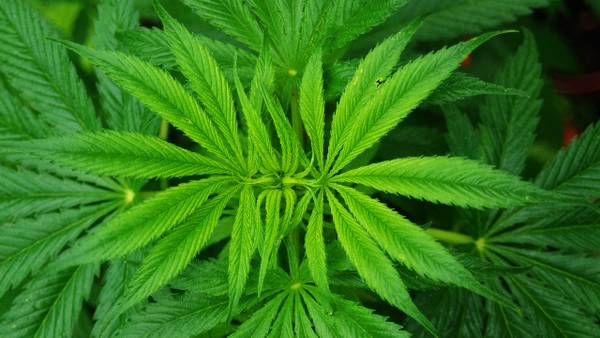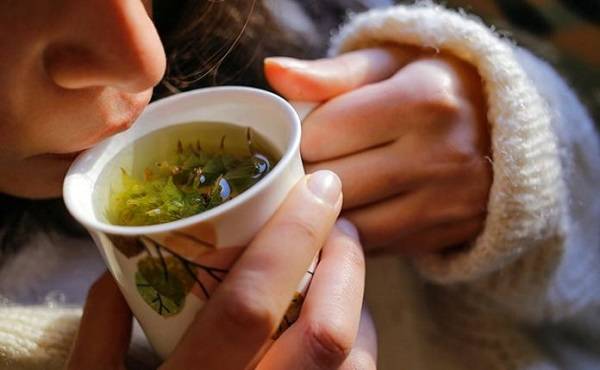Cannabidiol (aka CBD) has become the buzz word across the globe for its pharmaceutical properties. From being a hushed substance once to now becoming the talk of the town, most of the people are now well-acquainted with its uses and miraculous healing powers.
But do you know that CBD is derived from CANNABIGEROL?
CBG is yet another one of the hundred compounds present in the cannabis plant that was the first discoverer in the 1960s by researchers. It is referred to as the big brother of CBD and THC chemically.
In the words of Dr. Ethan Russo, Director of Research and Development at the International Cannabis and Cannabinoids Institute,” Cannabis plants make CBG, but usually, the plant doesn’t stop there. CBG is just a brief way station on the way to the production of other cannabinoids, like THC and CBD.”
It’s time you must know about this exotic non-psychoactive ingredient derived from the cannabis plant. Following you will find all the essential information about CBG:
What is CANNABIGEROL?
CANNABIGEROL is a” minor, non-intoxicating cannabinoid” present naturally only in trace amounts in the cannabis plant. It stands for cannabigerol and constitutes only about 1% of the total cannabinoids. This is a newly discovered compound and is currently being tested and experimented for its potential medical uses.
However, a 1968 study’ Biosynthesis of Cannabinoid Acids’ conducted by the Kyushu University in Japan had revealed the cannabis plant to be thousands of years old.
In the words of a board-certified anesthesiologist as well as a medical cannabis expert, Perry Solomon M.D., “CBG is the precursor to CBD, CBC, and THC. CBGA (the acidic, inactive form of CBG) changes, is broken down and becomes the base molecule that other cannabinoids form from.
We don’t know much about CBG. It’s not a common cannabinoid (being present only in minute amount), and you have to get enough to be able to test it and study it.” Therefore, CBG is known as the stem cell.
Its extensive therapeutic benefits have made it an area of great interest for the U.S. government. In 2018, the NCCIH (The National Center for Complementary and Integrative Health) made attempts to explore and study the medicinal uses of minor cannabinoids, including CBG.
Unfortunately, CGBA is not produced in abundant amounts in the majority of the strains as it is instantly converted to either THCA or CBDA. After this chemical synthesis, more production of THC means less CBG (and vice versa). Therefore, genetic manipulation and cross-breeding have been experimented on a large scale to obtain higher CBG content. For example, in an attempt to augment the yield of CBD, Subcool Seeds crossed strains.
Likewise, Bedrocan BV Medicinal Cannabis, a Dutch Company, produced a medical strain called Bediol. High levels of CBG were extracted from this strain as it was harvested during the optimum extraction time of the cannabis plant. This optimum period occurs after six weeks in an eight-week flowering cycle.
CBG vs. CBD vs. THC
To help you understand the difference between the three, let’s make it easier.
One can call CBG the mother of CBD and THC.
Curious to know why?
Because before compounds like THC and CBD produces, there must first be CBG. It is the breeding of CBG that prompts the production of THC and CBD.
In the initial stages of growth, there is an abundant amount of CBG-A (the acidic form of CBG) in the molecules of marijuana or hemp plants. (The hemp plant contains more CBG than marijuana plants). As the plant matures, CBG-A transforms into other cannabinoids like CBD-A, THC-A, and CBC-A.
This also levels out the strong effect of THC.
In the end, at the time of harvesting, only about one per cent of the actual CBG is left in the strain buds.
Yup!
It’s that simple!
Benefits/Pros of CANNABIGEROL
After a couple of researches were conducted, CBG was found to possess extensive benefits. It has a profound impact due to its interaction with our internal ECS (endocannabinoid system) that perform different functions on each area to balance our body’s state of homeostasis.
Just like CBD, CBG promises treatment for several medical conditions listed below:
1. CBG as a Potential Glaucoma Treatment
A study carried out in the 1990s found out that “CBG alongside other cannabinoids may have therapeutic potential for the treatment of glaucoma.” It helps relieve the intraocular eye pressure, unlike CBD, that does not.
THC also helps cure glaucoma; however, being a toxic substance, the benefits are limited. Therefore, CBG has so far proved to be the best remedy by excluding that intoxicating effect. Nevertheless, one must continue using the doctor-prescribed glaucoma medications and resort to CBG or other substances only after the physician’s consultation.
2. CBG as an Anti-Bacterial Agent
CANNABIGEROL possesses anti-bacterial powers to eliminate bacteria that are resistant to conventional antibiotics. According to the findings of a study conducted in 2008, CBG is particularly beneficial to avert Methicillin-resistant Staphylococcus aureus (MRSA)- a fatal bacterial infection that is resistant to methicillin (a common type of antibiotic)
3. CBG as a Mood Booster
Do you know that there are bliss molecules, named anandamides, spread all inside our body, which help to regulate our mood? Consuming CBG is a great way to boost these molecules.
4. CBG as a GABA Receptor Antagonist
Another positive characteristic of CBG is that it contributes to GABA reuptake inhibition.
GABA uptake inhibitors are popular for treating anxiety by producing stimulant and convulsant effects. A 1975 Study, Cannabinoids: influence on neurotransmitter uptake in rat brain synaptosomes corroborated that CBG curtails down the GABA uptake that ultimately leads to decreased anxiety. This, in turn, ensure myriad advantages such as body relaxation, tension relief, sense of calm, peace of mind, and muscle relaxation. Scientists believe that CBG is powerful even more than THC to trigger that muscle-relaxing effect.
5. CBG as a Potential Therapy for Irritable Bowel Syndrome and Colitis
According to a study conducted in 2013 on rats, Cannabinoids, including Cannabinegrol showed positive results on mitigating the impact of colitis in IBD patients as they experience “successful management of abdominal pain, joint pain, cramping, diarrhea, poor appetite, weight loss, and nausea”.
6. CBG as a Potent Neuro-protectant
In 2015, the impact of CBG for treating neurodegenerative diseases in rats was assessed. The findings proved that CBG not only promises to combat Huntington and a host of other neurodegenerative disorders but can also lower neuroinflammation and oxidative stress.
According to Dr. Goldstein, “CBG normalized expression of abnormal genes linked to brain degeneration, showing that it’s a neuroprotective compound.” However, to achieve the best results, we can combine CBG with other phytocannabinoids or therapies (following the theory of Entourage Effect).
7. CBG as a Cancer Fighter
Numerous researches and studies out there have time and time again highlighted that CBG makes up for an incredible cancer fighter by inhibiting the growth of specific cancer cells. For instance, a review article published in 2009 by the Cannabis International Organization,’ Non-psychotropic plant cannabinoids: new therapeutic opportunities from an ancient herb,’ claimed that CANNABIGEROL could reduce the growth of tumours to a remarkable level.
Similarly, another study from 2006 reported that CBG diminishes the hazards of Breast Cancer. Another study in 2014 backed the same claim as it found out that CBG hinders the growth and progression of the tumour in colon cancer.
Finally, recent research carried out in 2016, ‘The antitumor activity of plant-derived non-psychoactive cannabinoids’ noted that the” preclinical data strongly support the notion that non-psychoactive plant-derived C.B.s [cannabinoids, including CBG] can act as direct inhibitors of tumour progression as well as enhance the activity of first-line therapies.”
8. CBG as an Anti-Inflammatory Chemical
Laboratory studies have proven that CBG effectively works to heal inflammation of the skin. A research conducted in 2007 concluded that CBG not only lowers inflammation caused by IBD but can also be used in the treatment of eczema and psoriasis.
9. CBG as a Psychological Healer
A lot of studies and experiments support the claim that CBG possesses powerful anti-anxiety benefits without causing any addiction or being sedative. CBG binds to specific endocannabinoid receptors in the brain (with an affinity that is way lower than THC) that alleviate several mental and psychological disorders such as obsessive-compulsive disorder, post-traumatic stress disorder, social anxiety disorder, migraine, headaches.
According to a statement made by Daniel Luebke, the Head of Marketing and Brand at Heylo Cannabis, “THC can draw you inward, and it can make anxiety worse. But CBG seems to mitigate that effect”.
As it goes without saying that, the benefits mentioned above are still not proven in certified clinical trials. The researches highlighted above were limited in their scope as they mostly relied on animal models. Therefore, the assertions made above are not entirely conclusive.
Cons of CBG
Following we have outlined, some significant barriers when it comes to introducing CBG-based products to the masses:
1. Misconceptions of Cannabis
The stigmatization attached to the dangerous implications of consuming Cannabis has made things worse. Believe it or not, but the use of Cannabis or any of its compounds, including CBG, is still frowned upon in a lot of modern societies.
2. Restrictions on Cannabinoids
There have been many restrictions imposed on marijuana and hemp products for nearly a century. Even after the ban has been lifted in most U.S. States, there are problems of regulation and research. The cannabis substances have been placed in the DEA’s “Schedule 1” category, which requires that any research or study on the products must be done so outside of the United States.
Consequently, most CBG research is at the infant stage and mostly practised on animal models.
3. Scarcity of CBG
As discussed before, CANNABIGEROL is a rare phytocannabinoid being produced only in meagre amounts. It is synthesized into THC and CBD even before the plant flowers. It ultimately means that a very tiny amount is left behind to process, refine, supply, and distribute. Therefore, CBG is hard to find at dispensaries even if sold legally, and most of the substance comes combined with THC or CBD.
4. High Pricing
Do you know that CBG is dubbed as the Rolls Royce of cannabinoids?
The pricey equipment, costly extraction process, and scarcity, coupled with its high demand and pharmaceutical appeal, make its manufacturing notoriously expensive.
Side-Effects of CBG
A plus point of Cannabigerol is that it is not yet proved to cause any substantial harm or adverse effect on the human body- when consumed for medicinal purposes.
Perhaps, its only negative impact is that it stimulates one’s appetite, as indicated in a 2016 study. The research work named” Cannabigerol is a novel, well-tolerated appetite stimulant in pre-satiated rats. Conducted on mice” states that CBG can increase the consumption of meal frequency, without producing any adverse neuromotor side effects.
However, this could be helpful for those who wish to increase their appetite. For example, cancer patients while undergoing chemo sessions.
That being said, there might be possible that some adverse effects may exist, which are not yet proven or known owing to a lack of sufficient scientific research and evidence in the field. Rest assured, being non-psychoactive cannabinoid users will not experience any serious short or long-term adverse implications(like thereof THC).
The Accurate Dosage of CBG
The accurate intake of CANNABIGEROL depends on myriad factors such as the age of the consumer, his/her physical weight, any medical conditions or diseases, ongoing medications, or any allergies.
Also, first-time consumers must be particularly careful as with any new substance. Starting with little dosage, they must watch out for any adverse effect and also observe their body’s reaction. The intake of milligrams must be increased each day gradually until the desired result is achieved.
Generally, CBG companies recommend consuming 5 mg to 10 mg of CBG tincture once or maximum twice a day.
The best result is achieved through “sublingual ingestion.” For that, you must pour the CBG oil directly on your tongue and retain it there for one minute before swallowing. This allows your body to completely absorb the compound before it enters the digestive system and interacts with the human endocannabinoid system (ECS)- the cannabinoid receptors found in the brain.
Final Thoughts
CBD has gone extremely viral over the past decade. According to Statista, the industry is predicted to swell to a whopping $1.8 billion by 2022.
On the other hand, CANNABIGEROL has just begun to mark its presence. This was primarily due to its low concentrations in the Cannabis plant (even less than 1%) coupled with the inadequate research into its benefits and the extortionate pricing of its products. For most patients, it is a real struggle to find a decent supply of pure, high-quality CBG tincture for regular dosage. It pre-dominantly comes mixed with other Cannabinoids from the hemp or marijuana plant.
However, as we step into the second decade of the 21st century, International organizations and health professionals are keen to explore and learn even more about its benefits. The Big Pharma Brands, too, have increasingly turned their attention and efforts to manufacture innovative CBG-formulae products. This international recognition has also sparked an interest in cannabis consumers who are beginning to take notice.
Having the immense potential to make its way forward, CBG can become a viable treatment substitute for people suffering from anxiety and pain. Perhaps, a little more research, as well as awareness about its efficacy, could even disrupt CBD’s position in the market in the long-run.
















